“It is my belief that every last person on this planet can make healing art.”

“Rave is not religion… thank goodness”, says ERIS DREW. Truth is, there is no official doctrine, no bureaucratic leadership, no sketchy tax evasion, no real rules of practice—as long as you show the utmost respect to the people and spaces that hold you down while you sweat your soul away, you can come and go whenever you please, worshipping the deities of music at your own discretion.
Yet, for the legendary underground DJ hailing from Chicago, the epiphany of music’s divine energy has been made indisputable for quite some time. In 1994, on her way home from a rave, Eris had a psychedelic vision of a healing goddess power (revealed to her through an air conditioner in a minivan) that, on the spot, her friend named Motherbeat, and that would shape the rest of her life.
For our Rave Revolution series—and ahead of her appearance at Dekmantel 2019—Glamcult had the honour to talk to The High Priestess of Motherbeat about her tour and new label with her inimitable partner Octo Octa, party as ritual space, resisting homogeneity in the scene, and, of course, the healing capacity of music. Rave might not (or must not) be religion, but it has the power to break down, tear apart, and heal, one divine intervention at a time.
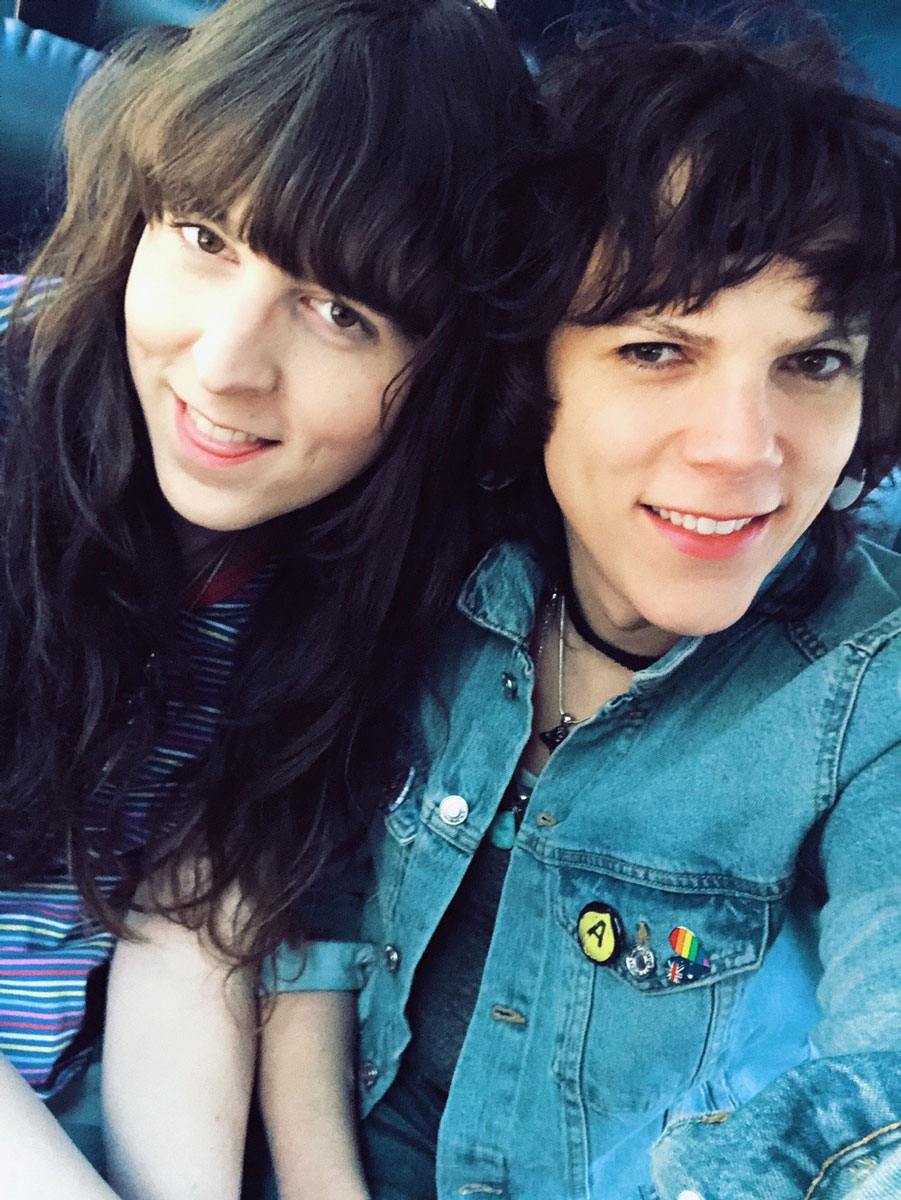
Your recent joint tour with Octo Octa, T4T LUV NRG, has taken you across US earlier this year, and now you’re about to play together at Dekmantel—what has this experience been like for you? Has it affected the way you play solo?
Maya says to me in quiet moments sometimes that she is “so happy we are doing this together.” We both want the energy and love contained in our favourite music to heal the dancers in the way it heals us. House music helps revitalize us. It helps us process our pain and our traumas. And this music gives voice to love. We experienced a lot of genuine joy that first tour. We played five cities in ten days, 27 hours total. We both said we came back from that tour different DJs. Better DJs. The shear intensity of the parties and the dancing made for a life-changing set of experiences. Maya and I encourage each other always. We try to impress each other with fader techniques, cuts, drops and our arrangements. We both start screaming and jumping when something goes well for the other during a set. We talk about our sets on early morning calls from our hotel rooms. We call it “processing the set”, which involves sharing what went well and what didn’t. Back home our partner Brooke intercepts a constant flow of cardboard boxes from Discogs.
Playing with Maya has absolutely affected me. There is a part of my record collection that she unlocked. In sense she made me love my old garage records again. I’ve played house music for the better part of 24 years, but some of the full-vocal tracks about love had been dormant. My heart opened when I fell in love with her, so the big disco vocals filled me up again. The first time she told me she loved me, she put on Love & Happiness by River Ocean featuring India. The subtitle of the song is “Yemaya Y Ochún.” It is named after Oshun (known as Ochún or Oxúm in Latin America), an orisha, or spirit goddess that reflects one of the manifestations of God in the Ifá and Yoruba religions. Oshun is the deity of rivers and fresh water, beauty and love. Importantly, Oshun brings sweetness. Whenever I play this record, I play it from the intro, which contains a Yoruban chant (translated excerpt):
Goddess of sweetness is Ochun… She is love and sweetness too / You’ve just got to believe there is Love and Happiness
Maya brought sweetness into my life in so many ways. Now I channel some of that sweetness into my sets. I try to do it at the right moments, when the only true catharsis the dancefloor needs is to feel love and a sense of togetherness.
The myth of Motherbeat, your personal philosophy that proposes this divine healing energy as the foundation of all music, somehow feels like a precious gift and the most common sense thing at the same time—when I heard about it first I felt both overwhelmed and relieved, as if light was finally shed on something that has been there all along. You said before that it has been your guiding principle ever since you first experienced it back in 1994, yet you only shared it publicly rather recently. Why did that feel like the right time to do so? Was it a conscious act of missionary-like proportions, or a more of an unconscious extension of your own openness?
My motivation was a little of both. I say this with a smile because Rave is not religion. It lacks the formal aspects of religion, thank goodness—we don’t have a central document, keepers of the faith, etc. But raving and clubbing for many does have a spiritual dimension. First and foremost, I shared my story publicly so I could heal. Many of the trans, non-binary and queer people I know have been through the ringer in life. We have had to fight for a public life, visibility, acceptance. We have been mislabeled most of our lives and forced into a cultural mode completely at odds with our true selves. Things got very dark in my life for a while years ago. I felt like I had failed so many people. To move on, I had to come to a place of understanding that my experiences were part of a deep process of becoming. I now understand that I underwent a healer’s trial. I think my life can only have meaning if I try to help other people like me to see themselves, to love their bodies and to make healing art. I shared my story in order to dignify other stories like mine.
After my set at Club Toilet in May of 2017 I started experiencing a lot of synchronicity. I was becoming interested in chaos magic and listening to lectures on shamanism. I was also finding out more about the myths surrounding “Eris”. You see, I picked this name without any foresight or consideration after I searched the web for ancient goddesses. As I would later discover, the myth had interesting connections to my life, including a link to one of my favourite bands growing up, the KLF. I had no idea when fell in love with the band in the 1990s that they were active Discordians who in effect worshiped Eris, the goddess of chaos. Discordianism is this rather stupid joke religion with an interesting backstory, which was incorporated into the counterculture classic, The Illuminatus trilogy of books. In 1963, the founders of Discordianism decided to make the little-known Greek Goddess of Chaos, Eris, the center of their new anarchistic religion. The KLF (aka the Justified Ancient of Mu Mu; furthermore, known as the Jams; also rumored to be known as King Lucifer Forever) incorporated ideas from Discordianism, chaos magic and the Illuminatus into their songs, stage pieces, and overall band mythology. The band went on to be the biggest-selling singles act in 1991. In 1994, they burnt a million quid on the island of Jura, deleted their catalog and quit the music industry. The band never could never express a coherent reason why they did it. KLF were almost universally reviled for what they did. Almost. The band consulted Alan Moore, the magician, to get his opinion and he told them that the fire was a spell, the result of which was uncertain. In a YouTube television rip of a 1995 interview on The Late Late Show, Bill Drummond, one of the band members, suggests that the burnt money might have been “an offering.” But to who or what?
Rumours were circulating the summer of 2017 about the KLF because they had announced their comeback tour 23 years after the fire (23, August, 2017). They did this because the number 23 is the number associated with Eris by Discordians.
1994 was a very intense year for so many people in the Rave scene—a phase change. I went through something that year, and I am not alone. In my private time I have devoted hundreds of hours to reviewing source material and anything else I think will shed a light on what I experienced. So 23 years after the fire, 23 years after the Motherbeat was first revealed to me, I decided to also tell my story.
Do you remember your first DJing experience? Was it pre-Motherbeat?
I do. A DJ I knew from parties said he would teach me how to mix. I was 18. I thought he was cool and desperately wanted to learn. He was 12 years older than me. He gave me my first pill of “E”. He liked me and wanted to have sex, which is the lousy part of the story because he was manipulative. But he let me DJ with him in the chill-out room at a rave, which blew my mind at the time. I could barely operate the decks and had no idea how to mix. The year was 1994.
You’re known for your own carefully curated Motherbeat parties, that really channel the diversity and freedom of the 90s party scene, both in music and setting—no professional photography, no branding that you normally see everywhere now. Space is clearly very important to you, could you tell us more about that? What has it been like spreading the magic of Motherbeat in a more mainstream club and festival scene?
I view a party as a ritual space, so I focus a lot of attention on the experience of the dancer. At night parties, lights should be minimal for several reasons. The visions on psychedelics are most powerful in darkness. And we find it easier to let go in darkness. Easier to dissolve. If I can pull it off, the sound system should be a presence in the room. I really can’t stand deconstructed club systems. I want all power emanating from a single source. So the speakers should be as close to the DJ as possible, like two monoliths flanking the medium. Ravers dance to the speakers, not just the DJ. The sound is critical. It is the carrier wave into the Other. Our conduit to rapture. The system should have what Octo Octa and I called “snap” in the midrange. Snap is what cracks your body open on a dancefloor. The system should “extend” in the low frequencies because a lot of the mystical energy and emotion in dance music is held in the bass. Finally, the system needs “air” so we feel the pressure from the records like a rejuvenating breeze.
I remove as much as possible all cultural information, including language, from the space (the anti-harassment policy should still be posted of course). We spend enough of our lives in a colonized, linguistically constructed reality. Our rituals are about transcending the rationalist nightmare, which does things like brutalize trans folks, de-power the subjective, and destroy our planet. We don’t need to see beer advertising and body imagery (which is almost always exclusionary) at our events. And we don’t want to use appropriated images from cultures, including most importantly indigenous cultures, in our effort to find spirituality.
Playing in more mainstream spaces is challenging but also an opportunity. My first real rave experience was at a big hardcore & trance event in 1994. Me and my friends ate sugar cubes and had an incredible experience. Was everything about that event perfectly curated and intentional? No, but the music was loud and penetrating. For the first time with other people I closed my eyes and danced. That party meant so much to me. It would be cynical of me to think that others don’t have similar experiences when I play large events. I view these spaces as having a lot of possibility. My goal at large events is to channel love, embody a strong feminine archetype, and take everyone into an ecstatic communal state. If the system is kickin’ and my decks aren’t freaking out, we can accomplish something.
In the time where the industry is becoming increasingly monetized, and therefore increasingly elitist and homogenized, where do you see the future of the underground scene, both on and beyond the dancefloor? What do we need to do, collectively, to keep it as healthy (as far as resisting homogeneity goes) as possible?
As a DJ from the USA, my scene back home is underground. Techno is making some promoters money in the big cities, but, by-and-large, I play for small crews run by artists and dancers. These people have day jobs and the events are done mostly for love. I don’t think people in Europe realize how far outside the mainstream the music is in the United States. I remember in the 90’s when people were printing money at the underground raves in Chicago. But those days are long gone. The scene exists in the USA because people work hard to preserve it. For us, the music continues to be a powerful way for people of all ages to find themselves and each other. In Europe/UK there are crews like Mina (Portugal), Room 4 Resistance (Berlin), Maricas (Barcelona) and Equalizer (Leeds) that remind me a lot of the artist-lead crews I run with back home. There are clubs which stretch hard to build and maintain an unpretentious true underground sound and vibe in their cities, like Kalt in Strasbourg, Goethebunker in Essen, and De School in Amsterdam. And there are small festivals which really get it right. Like Field Maneuvers, a 3-day and 800-person festival in a cold wet field north of London, and Unsound in Poland.
In terms of race and class the scene is certainly becoming more homogenous. When I was young most of the DJs I danced to were black, Latin or Asian. By and large these weren’t kids of rich families. That said, most of these DJs were cis men. Honey Dijon was the first out trans woman I saw DJ. I wouldn’t see another until 2016. So today we have a situation of increasing visibility for cis women, trans folks, and non-binary people, which is encouraging, but at the same time the composition of the scene is becoming more for privileged white people, which is nothing short of a total abomination.
The scene is not powerless to change this. Speaking directly to white people here: black lives matter. If you are white and form a crew, do it with people different than you. All white crews are not cool. Make sure your crew includes equalization efforts as part of its charter and don’t put yourself in charge. Keep your events affordable for all types of people in the community in which your event is held (early bird tickets, opportunities to volunteer). If you are white and host a festival, partner with POC promoters and vendors (including security), book people from local scenes, book POC artists (including headliners) as much or more than white artists and treat everyone with the same respect as a headliner. Apportion at least some of the profits to organizations in the community doing work for the people that need it most. And finally, elevate the work of amazing black artists every chance you get.
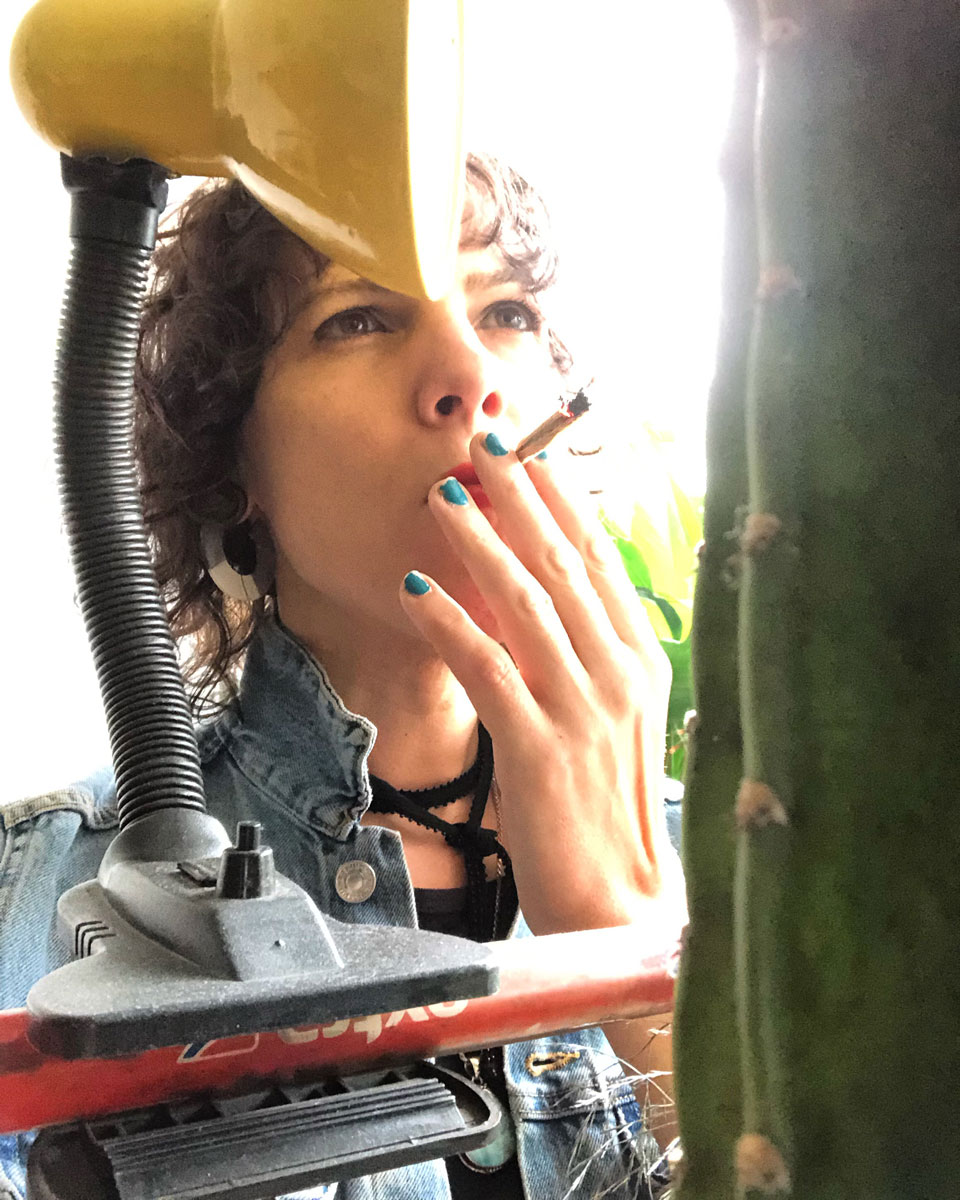
You have been raving and DJing for years and years, both in America and abroad, but in the recent years you’ve gone through quite a prolific rise, landing all these coveted international gigs like, for example, Panorama Bar (deservedly so!). How do these newer settings influence the sets you play? Does playing for a crowd in your native Chicago produce a different sonic and spiritual experience than playing for a huge crowd somewhere you’ might have never been before?
I play some of the most powerful and intentional dance spaces in the world. The spiritual energy at De School on a Sunday, for example, is manifest. My tone shifts a for set and setting. When I played during the day in the sun at Crave festival on the RA stage my set was all about manifesting positive energy, getting everyone moving together, and communicating directly with the dancers gathered before the speakers. The set was bright and narrative—a celebratory ecstatic ritual. When I closed Atonal the vibe over that four-hour set was more introspective and routed in psychedelic ideas. My focus was on experimentation and an exploration of the Mystery contained in the music. Why? Because four days into a music festival everyone is already dissolved. I don’t need to build heat. Everyone is ready to feel the whispering geometric wind, which I refer to as the Goddess. When I go home to Chicago I can’t say the vibe is more spiritual or intimate. It depends on the party. Something I don’t think people understand is that I have almost 40 years of trauma and collective memory to confront every time I go home. Set and setting magnify each other. I don’t get to breeze in. I go there because I love my Chicago friends, my family and many of the dancers at Smart Bar. But each trip to DJ at home is intense for me personally and spiritually. The set becomes a mirror of what I am experiencing inside.
Your process comes across as highly emotive and personal. What is self-care to you? As a healer yourself, do you ever feel drained by the powers you are transmitting, physically or mentally?
It is. I was asked the other day what I do with music now that I have healed. I laughed. To be clear, the music helps me to transform the everyday, because I struggle with both depression and anxiety. I spend a lot of time travelling triggered and exhausted. Self-care starts to become a punchline when you are traveling constantly and playing multiple events a weekend. Anthropologists categorize part of the healer’s toolkit as “ordeal.” For example, many spiritual practices involve asceticism, sleep deprivation, fasting and exposure (fire, walking on pins, holding difficult positions). And certain shamanic rituals center around ordeal intoxicants which cause purging and pain. Apparently, if I live a long life, it will be from staying up too late, fucking with my sleep cycle, exposing myself to insane volumes, dancing too hard, and eating irregularly. To take care of myself when I’m not touring I cook for myself, share my body with my loving partners, and spend as much time as I can in the forest. I avoid TV. I eat mushrooms and wear as little clothing as possible. When I am on the road I listen to lectures constantly and write music every chance I get. The messages dancers send me after events mean so much to me because often I can’t process the experience with anyone who was there. I am immediately off to try to sleep before I get on a plane and do it again. Music practice is critical. When I am writing music and practicing my mixing I am happy. I would DJ for five hours a day by myself if my schedule would allow it. I might be a touring artist but 99% of my deck-time has been logged at home alone.
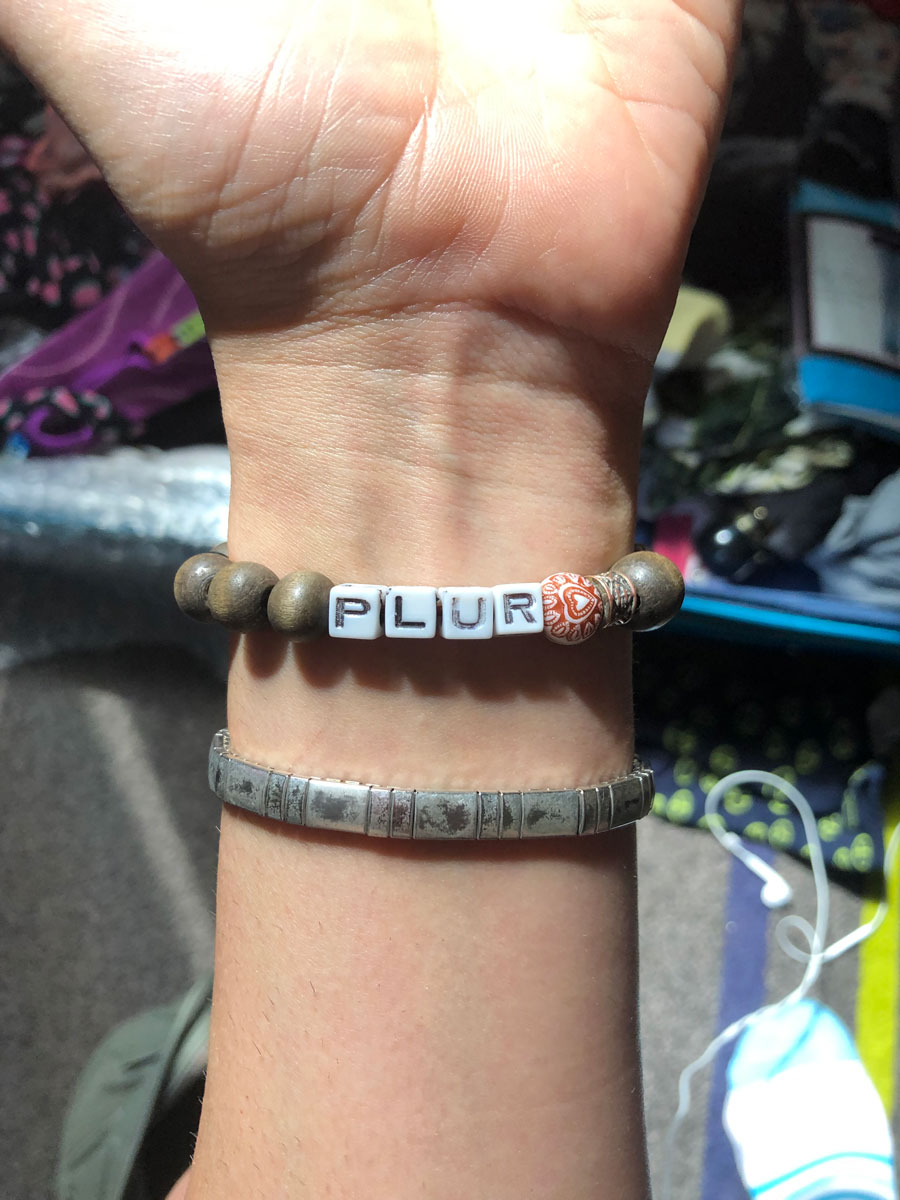
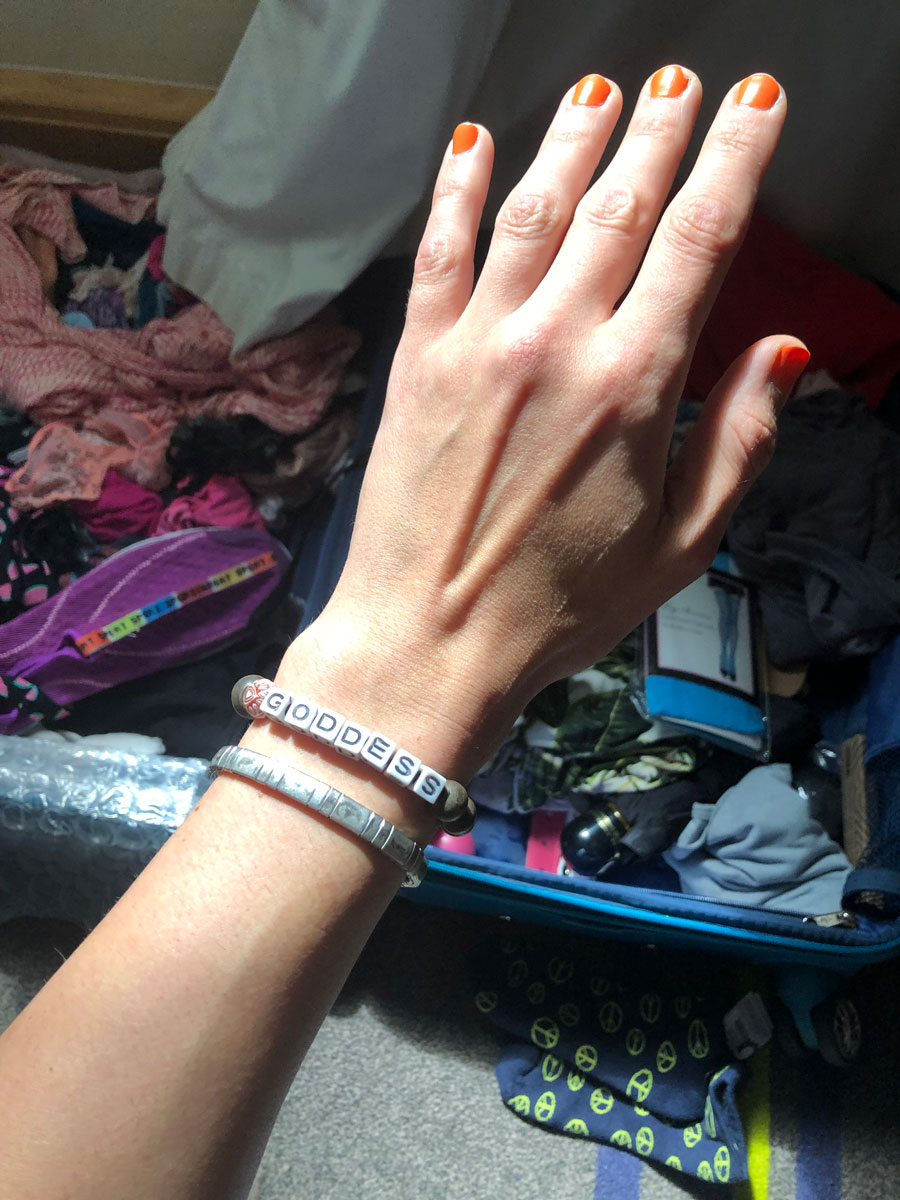
Do you have any personal rituals that you go through before or after (or while!) you play a set?
I have many rituals. I set intentions before the event. Sometimes I try to send Maya a message though what we call “our connection.” This is a grounding exercise to keep focused on love. I repeat my mantras. I reset myself through breathing and purge negative thoughts with a certain type of breath exercise I call a dragon breath. I spend a few minutes alone. If I am scared or upset I take my sacred objects out of my purse and hold them or place them on records. In my record bag I keep my high school copy of the KLF CD, The White Room, and a bead from my dear Jen Spektor’s neckless. My purse has a crystal pyramid from Brooke, a coin from Croatia that Maya gave to me (she keeps a matching one with her as well), and a few of her love notes—my precious little notes. I look at the “PLUR goddess” bracelet that Shane gave me. He is a sweet dancer and friend from San Francisco. I smoke some weed before my sets and when the setting is right, I nibble a gram of dried Psilocybe cubensis. If the needle skips or jumps I blow my vapor on it or put Brooke’s pyramid on the turntable. The moment I feel everyone is open I hold the record in front of me with both hands and offer it in a gesture. At heart, I am an alchemical witch and a techno healer. When the party reaches the heights of ecstasy, I close my eyes and allow something Mandela-like to form. Through this spiralling gate I send messages of love, healing and even forgiveness.
Who are some of your favourite DJs at the moment, someone who you perhaps see as being able to channel Motherbeat energy?
I saw Djrum at Weather Festival in Paris. That DJ is sick. Djrum had great vinyl skills and tight fader cuts. They played killer selection, which were both tough and beautiful.In terms of favourite dance DJs, rRoxymore, CCL, Russell E.L. Butler, Octo Octa, ADAB, Kiernan Laveaux, Violet and Paris (from Seattle) all channel what I call the Motherbeat. I think it is important to point out that these folks are my friends, so I get to hear them play more than others. There are so many other DJs that use dance music to heal. Maybe thousands of us. It is my belief that every last person on this planet can make healing art.
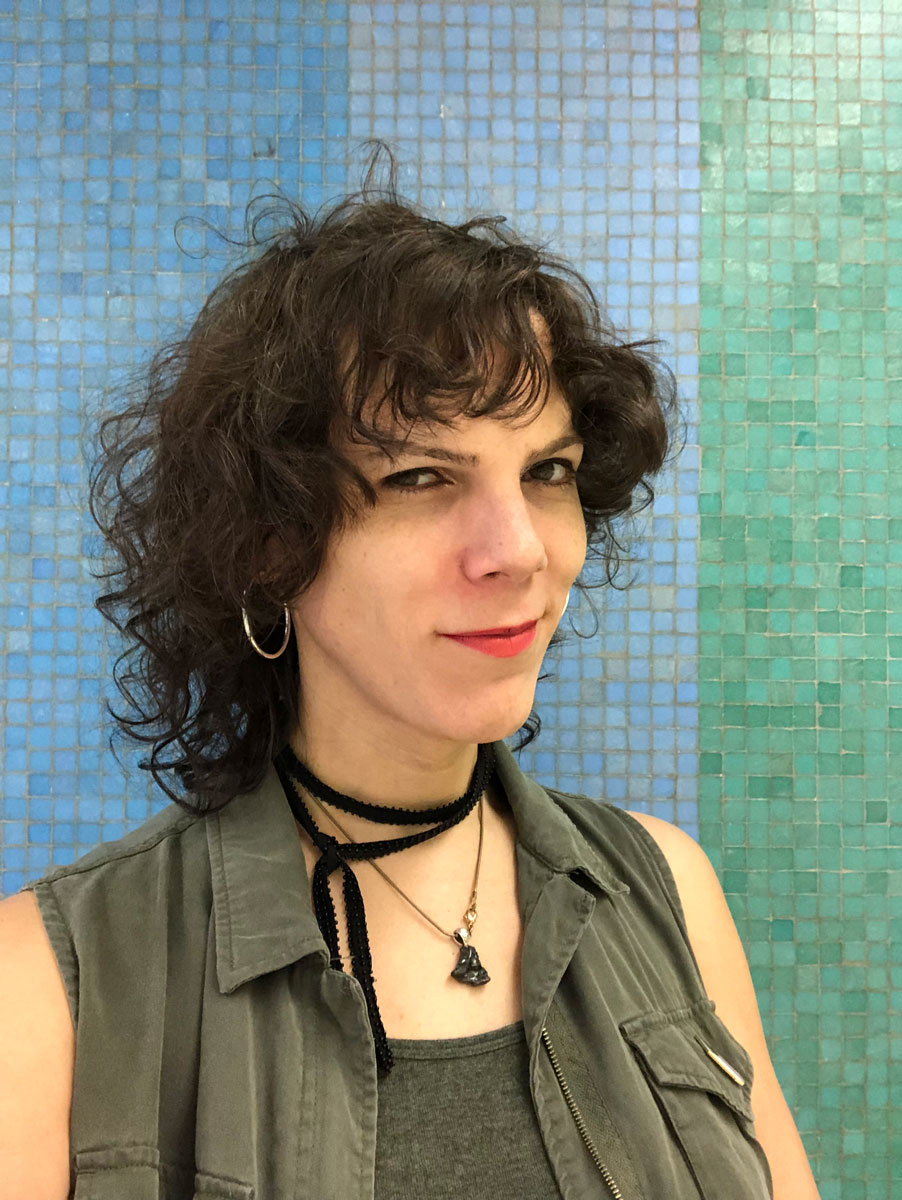
Words by Masha Ryabova
Photography by Jamie Rosenberg (header) and Eris Drew
Follow Eris on Instagram and Soundcloud
t4tluvnrg.bandcamp.com
Eris Drew and Octo Octa at Dekmantel Festival 2019:
www.dekmantelfestival.com
Notifications